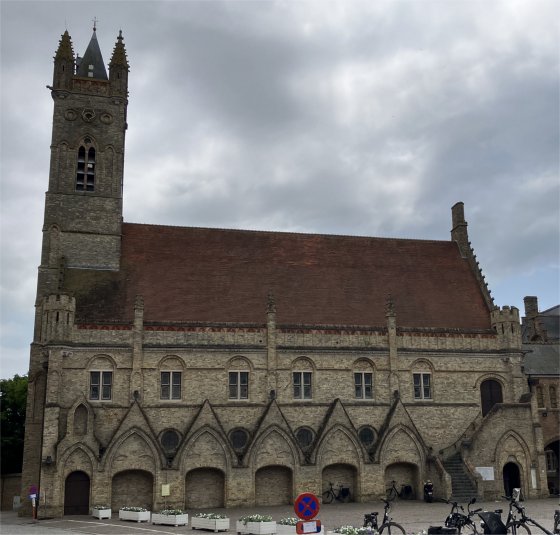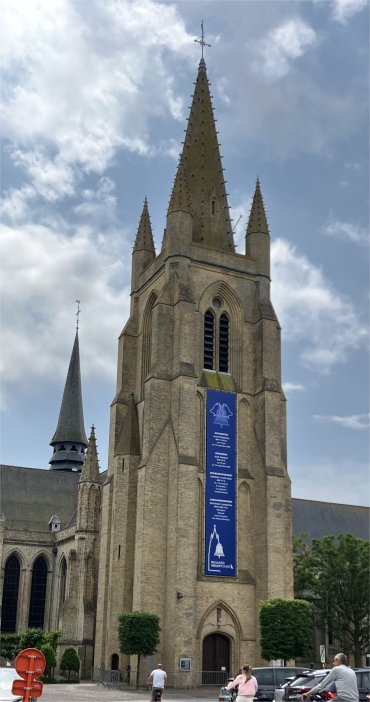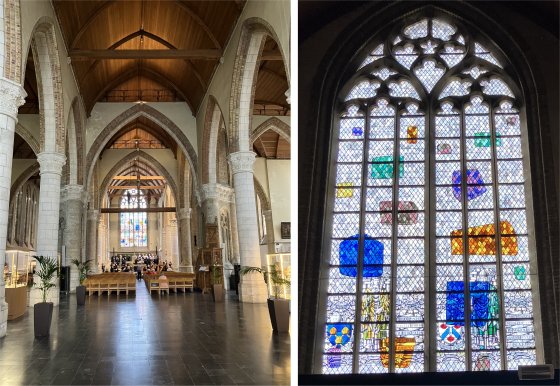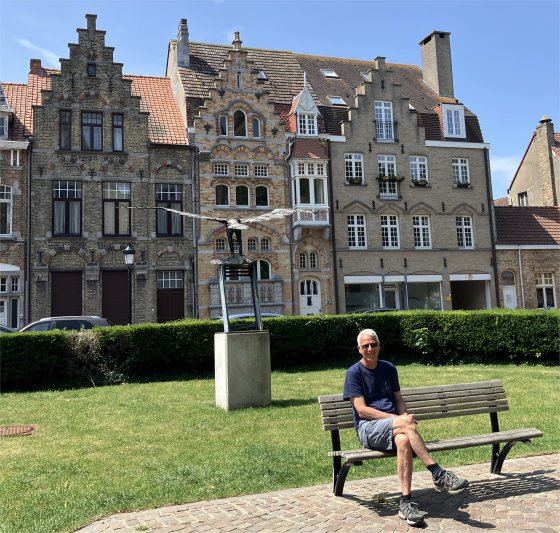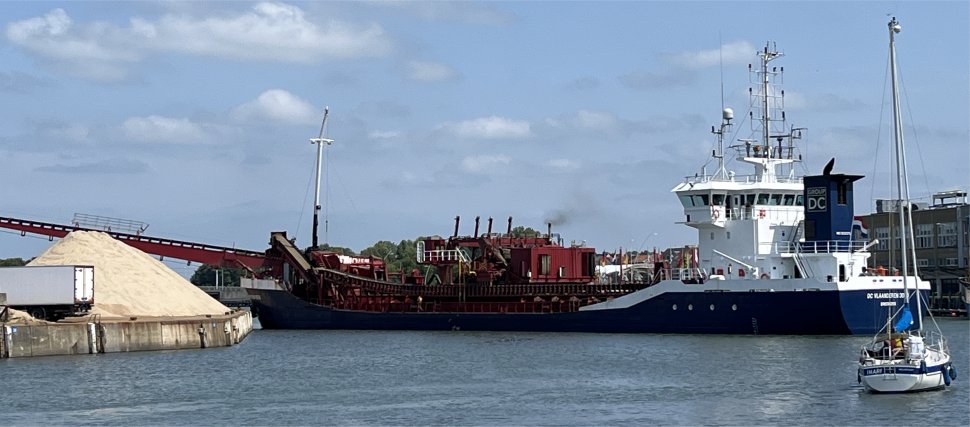The marina abounded with folk in the morning, most appearing to be non-sailors about to be taken out onto the expanse of the North Sea with trained crew for a taster session.
A quick analysis of weather and tides for the forthcoming days indicated that the 16th would be an opportune day to move on up the coast. Now we had time to gather our thoughts and explore the town we were temporarily based in.
Nieuwpoort is a town located in Flanders, one of the three regions of Belgium, in the province of West Flanders. It obtained city rights in 1163 from Count Philip of Flanders. The town saw action during the conflict between the Dutch and the Spanish, with the Battle of Nieuwpoort taking place in 1600.
Between 1757 and 1763, the town was occupied by French forces as part of the conditions of the Second Treaty of Versailles between France and Austria. In the 19th century, a large waterworks infrastructure project, the Ganzepoot, goose foot in Dutch, and aptly named since from the air the complex resembles a goose foot, was constructed to drain the polders and channel water in and around the town and to the North Sea.
During the Battle of the Yser, part of the First Battle of Ypres during World War 1, Hendrick Geeraert opened the sluice gates on the mouth of the river Yser twice to flood the lower lying land, thus halting the German advance.
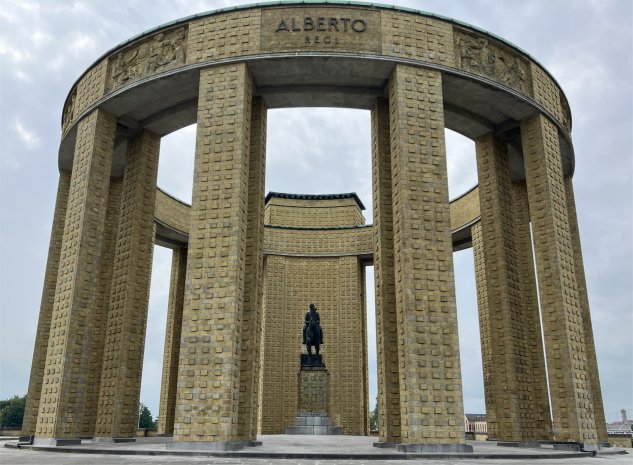 King Albert I Memorial |
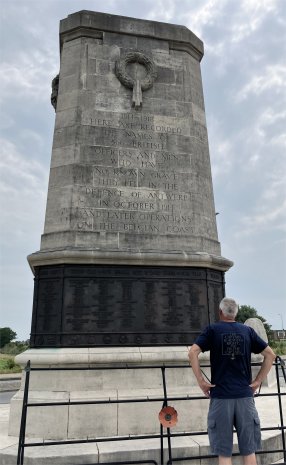 Memorial to the Missing |
Adjacent to the memorial stood the Memorial to the Missing, where the 600-mile long Western Front reached the sea. This memorial commemorates 552 British officers and men who were killed in Allied operations on the Belgian coast during the First World War and have no known grave. Twenty of those commemorated served with the Royal Naval Division and were killed or mortally wounded during the siege of Antwerp in October 1914. Almost all of the remainder fell in heavy fighting in the region of Nieuwpoort in the summer of 1917. The memorial is constructed of Euville limestone and stands 8m high. It was designed by William Bryce Binnie, an Imperial War Graves Commission architect who served with The Black Watch during the war and was twice decorated for bravery. The lions standing at each point of the triangular platform were designed by Charles Sergeant Jagger, a celebrated British sculptor and decorated veteran of the Western Front. The memorial was officially unveiled by Sir George Macdonogh in July 1928.
Located below the King Albert I Memorial was the Westfront Visitor Centre, which related the gripping story of the destruction of the town and how the strategic flooding of the polder plain halted the German invasion; a story of the power of sea water and the thoughtful management of locks and sluices. An art gallery in the Visitor Centre also enhanced the moving accounts.
By the 18th October 1918 the Germans were on the outskirts of Nieuwpoort with seemingly little to prevent them from securing the coast and the all-important channel ports. Following the fall of Antwerp, King Albert and his tiny Belgian Army had retreated behind the Yser River, and with the aid of French reinforcements had set about defending what was left of Belgium in Allied hands.
With the situation turning ever more desperate and his soldiers at the end of their ability to resist the German military machine, King Albert, after consultation with his Staff and civilian engineers, gave permission to flood the polders between the Yser and an embankment formed by the Nieuwpoort-Diksmuide Railway. On the 27th October 1914 the inundation was begun by opening the Kattesas. This proved inefficient and the following nights the Noordvaart was opened right under the noses of the Germans (by now the Ganzepoot Sluice System was in no mans' land). It was Hendrick Geeraert who played a major role in controlling the sluices; very much a local hero.
Many decisions were made during the war, but in October 1914 King Albert, the Knight King as he is known in Belgium, saved the coast from falling into the hands of the enemy. Later, the Allied Supreme Commander, Maréchal Ferdinand Foch would state that France had been saved by a railway embankment a metre and a half high.


